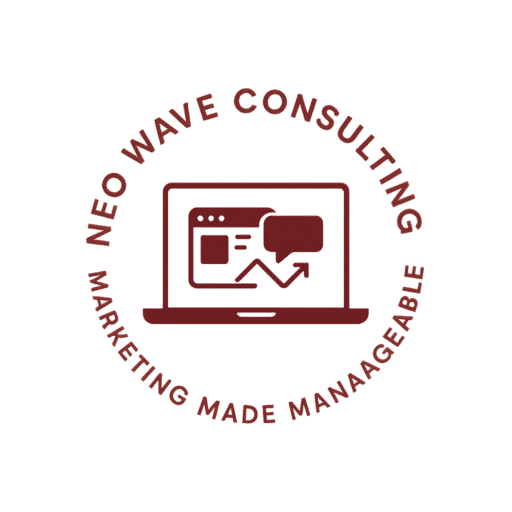Marketing isn’t just about ads and algorithms. It’s about people, and people trust brands that feel real.
If your message feels off, it usually means one of your marketing values is missing.
We’re breaking down the 4 essential values behind marketing that connects, converts, and builds trust: Clarity, Consistency, Empathy, and Value. These aren’t just “nice-to-haves.” They’re the foundation of everything that works.
Whether you’re running a solo business or leading a growing team, getting these right makes everything else easier.
TL;DR Summary
| Core Value | Why It Matters |
|---|---|
| Clarity | So your audience knows exactly what you do. |
| Consistency | Builds trust by showing up the same way every time. |
| Empathy | Shows people you actually understand them. |
| Value | Helps people before they even pay. |
Clarity: Say What You Mean (and Mean It)
Clarity is the most underrated part of marketing. People think they need to sound clever or use buzzwords to stand out. But most of the time, the cleverer you sound, the less people trust you. If someone lands on your site or reads your ad and isn’t sure what you do, they’re gone. Period.
Clarity starts with knowing exactly who you’re talking to and what they need. Are you speaking to small business owners who need more leads? Or to e‑commerce stores struggling with retention? Be specific. The more clearly you define your audience, the more direct your message becomes.
It also means stripping away fluff. You don’t need to say you’re “a results‑driven, forward‑thinking digital solution provider.” Just say: We help you get more qualified leads without wasting your ad budget. That’s clear. That’s honest. That works.
Clarity shows up in your website copy, your emails, your social media bios, and everywhere else. It’s about answering three questions right away:
- Who are you?
- What do you do?
- Why should someone care?
If your homepage, ad, or pitch doesn’t answer those questions fast, you’re leaving money on the table.
You can also test clarity. Try reading your core message out loud to someone outside your industry. If they say, “I get it,” you’re on the right track. If they squint or ask, “So what do you actually do?” then it’s time to simplify.
Clarity doesn’t mean dumbing it down. It means respecting your audience’s time. People are busy. Make it easy for them to know exactly how you help, and they’ll listen.
Key Takeaway:
If people don’t understand what you offer in the first few seconds, they won’t stick around. Be clear, be direct, and always address one person at a time, not everyone.
Consistency: Trust Grows When You Show Up the Same Way
Consistency isn’t just about posting every Tuesday. It’s about showing up with the same tone, the same message, and the same level of care wherever your brand lives.
Think about your favorite brands. Whether it’s a big company like Apple or a small local coffee shop, they feel reliable. That’s because their message, look, and behavior don’t change depending on the day, platform, or mood. You trust them. Your audience wants that same reliability from you.
Start with visual consistency.
Your colors, fonts, logos, and images should look like they belong to the same family. This makes your brand instantly recognizable, even in a busy feed or crowded inbox.
Next, think about your tone of voice.
Are you casual and direct? Are you more formal and informative? Pick a tone and stick to it. Don’t sound fun on Instagram and robotic on your website. People notice those shifts, and they don’t always trust them.
Then there’s message consistency.
Say the same core things over and over. Repetition builds memory. If you’re about “low‑cost, high‑conversion funnels for service businesses,” that message should echo on your homepage, in your emails, and in client calls.
Consistency also applies to your actions.
If you promise value, deliver it. If you claim to be fast, respond promptly. Nothing builds trust faster than doing what you say you will, again and again.
And don’t forget: consistency isn’t the same as being boring. You can switch up your format (videos, blog posts, tweets) while still sounding and looking like yourself.
Key Takeaway:
People don’t trust what they only see once. When you show up the same way visually, verbally, and behaviorally, your brand becomes memorable and dependable.
Empathy: Marketing That Feels Human Wins
Empathy is your secret weapon. It’s what makes people stop scrolling and say, “That’s exactly how I feel.”
At its core, empathy in marketing means understanding your audience’s pain and showing that you care enough to help. It’s not about fake relatability. It’s about listening, learning, and reflecting real experiences.
You start by getting curious:
- What’s your audience struggling with right now?
- What are they trying to avoid?
- What have they tried that hasn’t worked?
You can pull this from client calls, feedback emails, Reddit threads, YouTube comments—anywhere real people are talking. Then, use their words in your content. When your copy says, “Tired of burning money on ads that don’t convert?” and that’s exactly how someone feels, they’ll feel seen. That’s empathy at work.
Empathy also means guiding, not preaching. Instead of saying, “Here’s what you should do,” say, “Here’s what’s worked for others like you. Maybe it’ll help.” You’re not the hero, they are. You’re just the helpful guide.
Even the layout of your content can reflect empathy. Break up long text. Use clear headings. Include examples. Think: “What would make this easier to understand for someone who’s new to this?” That’s how you write with empathy.
Empathy doesn’t just make people feel good. It drives decisions. When people believe you understand them, they’re more likely to listen, trust, and buy.
Key Takeaway:
Empathy builds connection. When your audience feels understood, not targeted, they’re far more likely to trust you, engage with you, and choose you.
Value: Give First, Win Later
If there’s one rule in marketing that never fails, it’s this: the more value you give upfront, the easier the sale becomes.
Value doesn’t always mean giving away free stuff. It means making people’s lives easier, better, or clearer before they ever pay you a cent.
That could be:
- A blog post that teaches them something useful
- A free tool that saves them time
- A short video that solves a common problem
- A checklist or template they can actually use today
When you lead with value, two things happen. First, you position yourself as an expert. Second, you build goodwill and trust.
People remember who helped them. Even if they’re not ready to buy now, they’ll come back, or refer others, because you gave before asking.
Here’s where many marketers mess this up. They give only half of the answer and then tease the rest behind a paywall. That’s not value. That’s bait. Real value stands on its own. If someone never hires you, they should still walk away thinking, “That was actually helpful.”
Value also means respecting your audience’s time. Don’t over-explain. Don’t bury answers. Give them what they came for, clearly and quickly.
Over time, value compounds. The more genuinely useful things you create, the more your brand gets shared, saved, and remembered. And when someone is finally ready to buy? You’ll be the obvious choice.
Key Takeaway:
Give generously, help freely, and your audience will pay attention and pay you when the time is right. Value earns trust faster than hype ever will.
Conclusion: Values Grow Visibility
If your marketing feels off or just isn’t converting, it’s usually not the platform or the algorithm. It’s the foundation.
The truth is, great marketing doesn’t start with tactics. It starts with values. And the four you’ve just read about, Clarity, Consistency, Empathy, and Value, are what set smart, sustainable brands apart from the noise.
- Clarity gets you noticed.
- Consistency gets you remembered.
- Empathy gets you trusted.
- Value gets you chosen.
Whether you’re just starting out or refining what’s already in motion, these are daily practices. They show up in your writing, your visuals, your offers, and even your customer service.
So next time you feel stuck, come back to these four questions:
- Am I being clear?
- Am I being consistent?
- Am I showing empathy?
- Am I giving real value?
If you can answer “yes” to each, you’re doing more than marketing. You’re building a brand people actually want to hear from, and buy from.


0 Comments